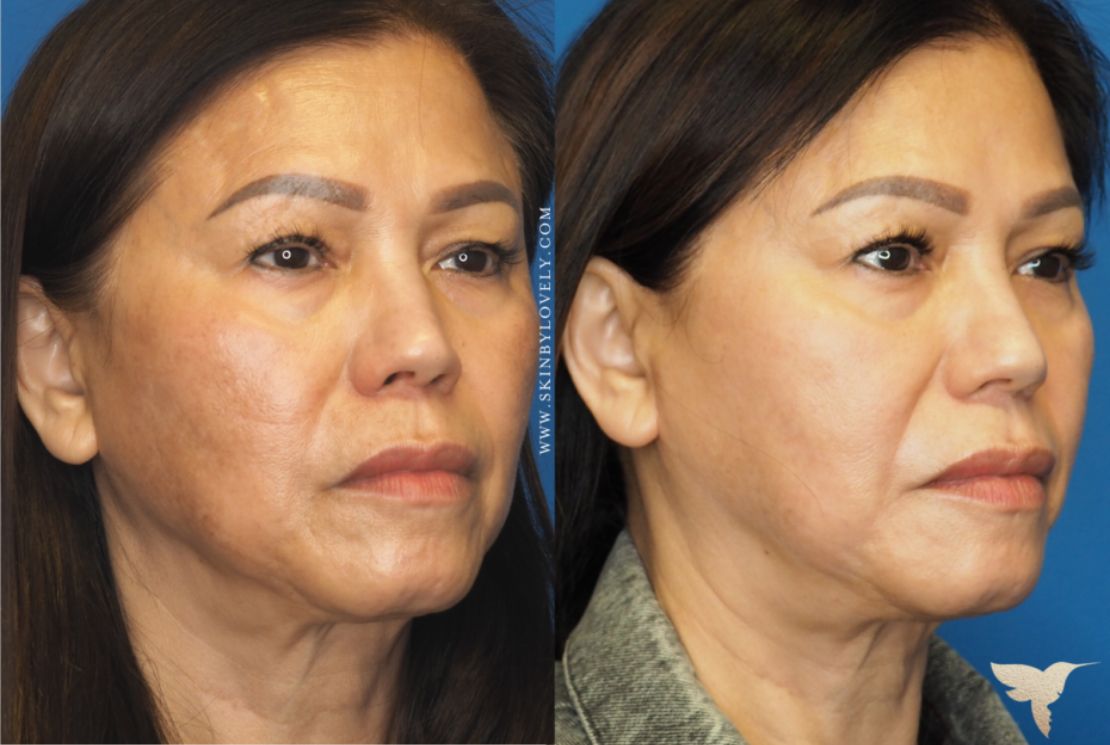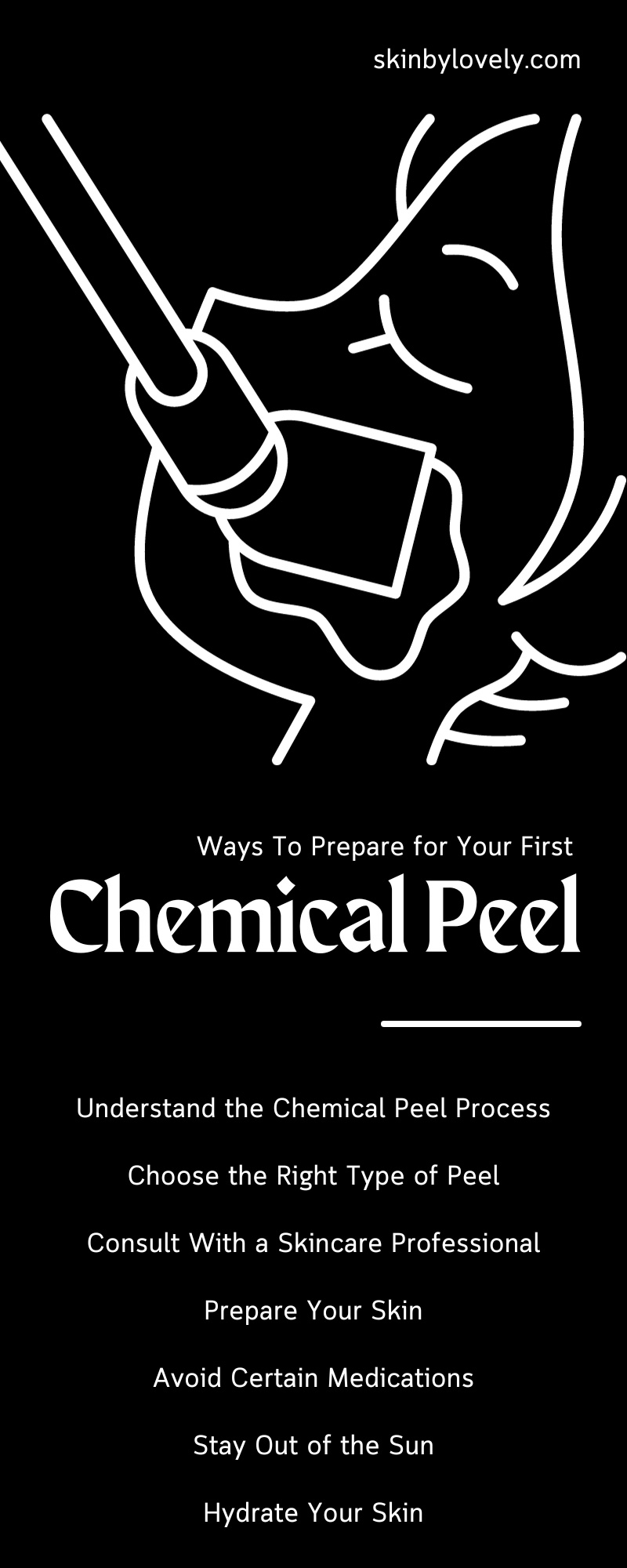13 Ways To Prepare for Your First Chemical Peel

Embarking on the journey of a chemical peel for the first time can be both exciting and a little intimidating. A chemical peel is a cosmetic treatment that uses a chemical solution to improve and smooth the skin’s texture by removing its damaged outer layers. However, you have to prepare your skin and understand the process to ensure the best results and a smooth recovery. Here are 13 ways to prepare for your first chemical peel.
Understand the Chemical Peel Process
Before your first chemical peel, learn what the procedure entails. A chemical peel involves applying a chemical solution to the skin to remove the top layers. The skin that grows back is smoother.
With a range of peels available, from light to deep, different options address different skin concerns, like acne, wrinkles, and uneven skin tone. Familiarize yourself with the process and options to set realistic expectations and ease any apprehensions.
Choose the Right Type of Peel
Selecting the right type of chemical peel is key. Light peels are gentle and require no downtime, while medium and deep peels are more intense. Discuss with a dermatologist or skincare professional to determine which peel suits your skin type and addresses your concerns. Factors like skin sensitivity, the desired outcome, and your lifestyle should guide your choice.
Consult With a Skincare Professional
A consultation with a skincare professional is essential. They can evaluate your skin type, discuss your skincare goals, and recommend the best peel. This is also the time to disclose skin conditions or allergies and review your current skincare routine. The professional’s expertise will guide you toward a safe and effective treatment.
Prepare Your Skin
Preparing your skin weeks before the peel can enhance results. This might involve using specific skincare products like retinoids or alpha hydroxy acids, as your skincare professional recommends. These products can precondition your skin, making it more receptive to the peel. Avoiding harsh treatments or exfoliating agents right before the peel is also crucial.
Avoid Certain Medications
Some medications can affect how your skin reacts to a peel. For instance, retinol, retinoids, or other exfoliating agents can increase skin sensitivity. Discuss any adjustments to your medication regimen with your healthcare provider before the peel. This step ensures your skin is in the best condition to handle the chemical solution.
Stay Out of the Sun
Sun exposure can lead to skin sensitivity and even damage, which isn’t ideal before a chemical peel. Avoiding excessive sun exposure and wearing broad-spectrum sunscreen with an SPF of 30 or higher is essential in the weeks leading up to your appointment. This reduces the risk of complications and ensures a smoother healing process.
Hydrate Your Skin
Hydration is vital when preparing for a chemical peel. Healthy, hydrated skin can significantly improve your peel’s outcome and aid in the recovery process. In the weeks leading up to your peel, focus on enhancing your skin’s moisture levels. Use a high-quality, nonirritating moisturizer that suits your skin type, applying it regularly throughout the day.
Additionally, consider incorporating hydrating serums or masks that contain hyaluronic acid or glycerin into your routine. These products can help lock in moisture and strengthen your skin’s barrier function.
Plan for Downtime
Planning for some downtime is essential, depending on the depth and intensity of your chemical peel. Light peels may have minimal to no downtime, but medium to deep peels might require a few days up to a week off from work or social engagements. During this period, your skin may be red and sensitive, and it may peel or flake. This is a normal part of the healing process, but it might not be aesthetically pleasing. Ensure you have a comfortable, stress-free environment at home where you can recuperate. Avoid scheduling important events or meetings during this time, and give your skin the rest it needs to recover optimally.
Arrange for Post-Peel Care Products
Post-peel care is crucial for a successful chemical peel recovery. Before your peel, stock up on recommended aftercare products. These typically include a gentle, soap-free cleanser to avoid irritating the skin, a rich, soothing moisturizer to alleviate dryness, and a sunscreen to protect the new skin from sun damage.
Some professionals might also recommend specific healing ointments or hydrating serums. Having these products on hand before your peel ensures you can start your aftercare routine immediately following your treatment, promoting a quicker and more effective healing.
Consider Timing
The timing of your chemical peel is an important consideration. If you have an important event, such as a wedding or a vacation, schedule your peel well in advance. For light peels, a few days to a week might be sufficient. However, for deeper peels, you may need several weeks or even months ahead of the event to allow your skin to fully heal and the results to fully emerge.
Plan your peel during a period when you can avoid excessive sun exposure, as your skin will be more sensitive to UV rays after the treatment. Additionally, consider your personal and work schedule to ensure you can accommodate the necessary downtime for healing.
Stay Hydrated and Eat Well
It’s not enough to hydrate your skin—you should hydrate yourself, too. In the days leading up to your peel, focus on staying hydrated and eating a balanced diet rich in vitamins and antioxidants. This can help your skin heal faster and more effectively after the procedure.
Set Realistic Expectations
Having realistic expectations about the results of a chemical peel is important. While chemical peels can significantly improve skin texture and appearance, they may not magically fix all skin issues. Discussing the expected outcome with your skincare professional can help set a realistic view of what the treatment can and cannot do for your skin.
Get Lubricant
Lubricating the skin after receiving chemical peel services is crucial for healing and comfort. Your skincare professional may recommend specific ointments or creams to keep the treated area well-lubricated. This helps manage dryness and peeling and aids the recovery. Follow your provider’s instructions carefully to avoid damaging your skin and ensure optimal healing.
Now that you know these 13 ways to prepare for your first chemical peel, you can approach this skin rejuvenation treatment with confidence and readiness. From understanding the process to following proper skin preparation and aftercare, each step is crucial in ensuring a successful and safe chemical peel experience.

The post 13 Ways To Prepare for Your First Chemical Peel appeared first on Skin by Lovely.
—————
Boost Internet Speed–
Free Business Hosting–
Free Email Account–
Dropcatch–
Free Secure Email–
Secure Email–
Cheap VOIP Calls–
Free Hosting–
Boost Inflight Wifi–
Premium Domains–
Free Domains
